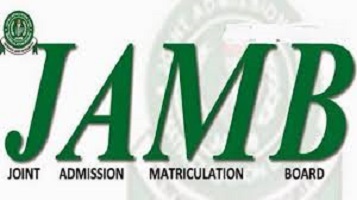Table of Contents
Jamb 2021 past questions and answers PDF download
Here as we promised we will conduct some classes and give you deep insights on how to pass jamb 2022, download this free pdf and master the past questions as jamb repeats past questions yearly.
To download this PDF, scroll down the page, meanwhile go through these questions below and learn more when you download the pdf, cheers.
Some chemistry jamb questions and answers
(1) An organic compound contains 60% carbon, 13.3% hydrogen and 26.7% oxygen. Calculate the empirical formula.
(A) C6H13O2
(B) C4H9O
(C) C5H12O
(D) C3H8O
[C = 12, H = 1, O = 16]
Answer – D
(2) The reaction between ammonia and ethyl ethanoate produces
(A) ethanol and propanamide
(B) ethanol and ethanamide
(C) propanol and ethanamide
(D) propanol and propanamide.
Answer – B
(3) 2-methylbutan-2-ol is an example of a
(A) secondary alkanol
(B) tertiary alkanol
(C) dihydric alkanol
(D) primary alkanol
Answer – B
(4) Chlorophyll obtained from green leaves of plant can be composed of more than one coloured component by the technique of
(A) crystallization
(B) hydrolysis
(C) chromatography
(D) sublimation
Answer – C
(5) The colour of the fountain water is
A. blue B. orange C. red D. yellow.
Answer – C
(6) Permanent hardness of water can be removed by
(A) filtration
(B) adding slaked lime
(C) adding caustic soda
(D) boiling.
Answer – B
(7) A solution which on treatment with hydrochloric acid produces a colourless, odourless gas which turns lime water milky is most likely to be a
(A) trioxocarbonate(IV)
(B) trioxonitrate(V)
(C) hydroxide
(D) chloride
Answer – A
(8) If chlorine is bubbled into water and the resulting yellowish-green solution is exposed to bright sunlight for a while, the solution will decompose giving out
(A) oxygen, thereby producing hypochlorous
(B) chlorine and oxygen
(C) oxygen and leaving behind aqueous hydrochloric acid
(D) oxygen, hydrogen and chlorine
Answer – C
(9) H3PO4(aq)+ H2O(l) → H2PO4–(aq) + H3O+(aq)
∆H = –13kJ at 298K
In the reaction above, an increase in temperature would
(A) have no effect on the reaction
(B) slow down the reverse reaction
(C) favour the forward reaction
(D)favour the reverse reaction
Answer – D
(10) Sulphur (IV) oxide bleaches by
(A) hydration (B) reduction (C) absorption (D) oxidation
Answer – B
(11) Which of the following gases can be collected by the method of downward delivery?
(A) Oxygen (B) Hydrogen (C) Chlorine (D) Ammonia.
Answer – C
(12) Milikan’s contribution to the development of atomic theory is the
determination of
(A) charge on electron (B) positive rays (C) charge to mass ratio (D) cathode rays
Answer – A
(13) What current in amperes will deposit 2.7g of alluminium in 2 hours? (A) 32 (B) 8 (C) 4 (D) 16
Answer – C
(14) Ethanoic acid is
(A) tribasic (B) unionizeable (C) monobasic (D) dibasic
Answer – C
DOWNLOAD THE JAMB PAST QUESTIONS PDF

Well the Author really did a good job
Bravo!! More grace and knowledge
I learned a lot ….the one I knew and the ones I saw from the Author
Well the Author really did a good job
Bravo!! More grace and knowledge
I learned a lot
Thank you